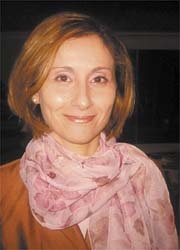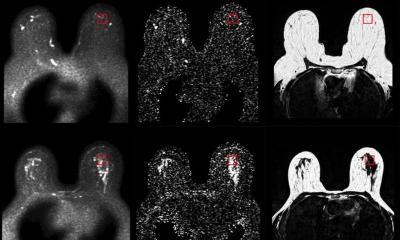MR spectroscopy
High specificity and sensitivity in the identification of breast cancer
USA - MRI is playing an increasingly important role in breast cancer screening in the US, especially in the screening of high risk patients. It has proven to be more sensitive than mammography examinations, but is less accurate in the differentiation between benign and malignant lesions.

Doctors still recommend breast biopsy procedures of suspicious MRI findings. As a recent study from scientists at the Memorial Sloan-Kettering Cancer Centre, New York, USA, shows, MR spectroscopy is a safe and efficient method for the identification of breast neoplasms, that has potential to significantly reduce the need of MRI guided breast biopsies in the future.
‘With MRI we scan a part of the body and generate an image that can be used for the diagnosis of malignant lesions. MR spectroscopy scans a part of the body as well, but it generates a graph that gives information about the biochemical composition of the area we are examining,’ explained Lia Bartella MD, director of breast imaging at Eastside Diagnostic Imaging in New York City. Dr Bartella and colleagues most recently examined 32 cases of non-mass enhancing breast lesions in women aged 20-63, using proton magnetic resonance spectroscopy (Radiology 10/2007).
`Proton magnetic resonance spectroscopy (H MRS) can be performed on a clinical MRT with at least 1.5T. It adds only 10 minutes to a standard MR examination and spectroscopy sequences, for scanning, are commercially available as is the software for off-line data processing. In the study we used a breast coil and noninvasively measured the levels of choline compounds. Tumours showing elevated choline levels are likely to be malignant,’ Dr Bartella added.
The team found positive choline findings in 15 of 32 lesions, of which 12 lesions finally were proven to be malignant. H MRS had a high specificity of 85% and a sensitivity of 100%, which means a reasonable number of breast-biopsies could become unnecessary.
`MRI guided needle biopsy is a pretty safe procedure as, unlike with other tumours, there is no spread of tumour possible. But 80% of all breast lesions biopsied are found to be benign. During our research we found that MR spectroscopy in our group of patients (Radiology 06/2006) could have spared 57% of these biopsies, while missing none of the cancers.’
Although MR spectroscopy is already in clinical use to diagnose brain and prostate tumours, it is not used clinically for examining the breast at the moment. Dr Bartella hopes, that in the future, this examination may be able to eliminate many expensive biopsies for indeterminate lesions found during a breast MRI examination.
`MR spectroscopy of the breast is still a research tool, but it may become part of the standard breast MRI examination. It may also be used to monitor and predict the response to neo-adjuvant chemotherapy in the future. But to achieve this, the MR spectroscopy needs to be advanced technically,’ Dr Bartella concluded.
31.12.2007











